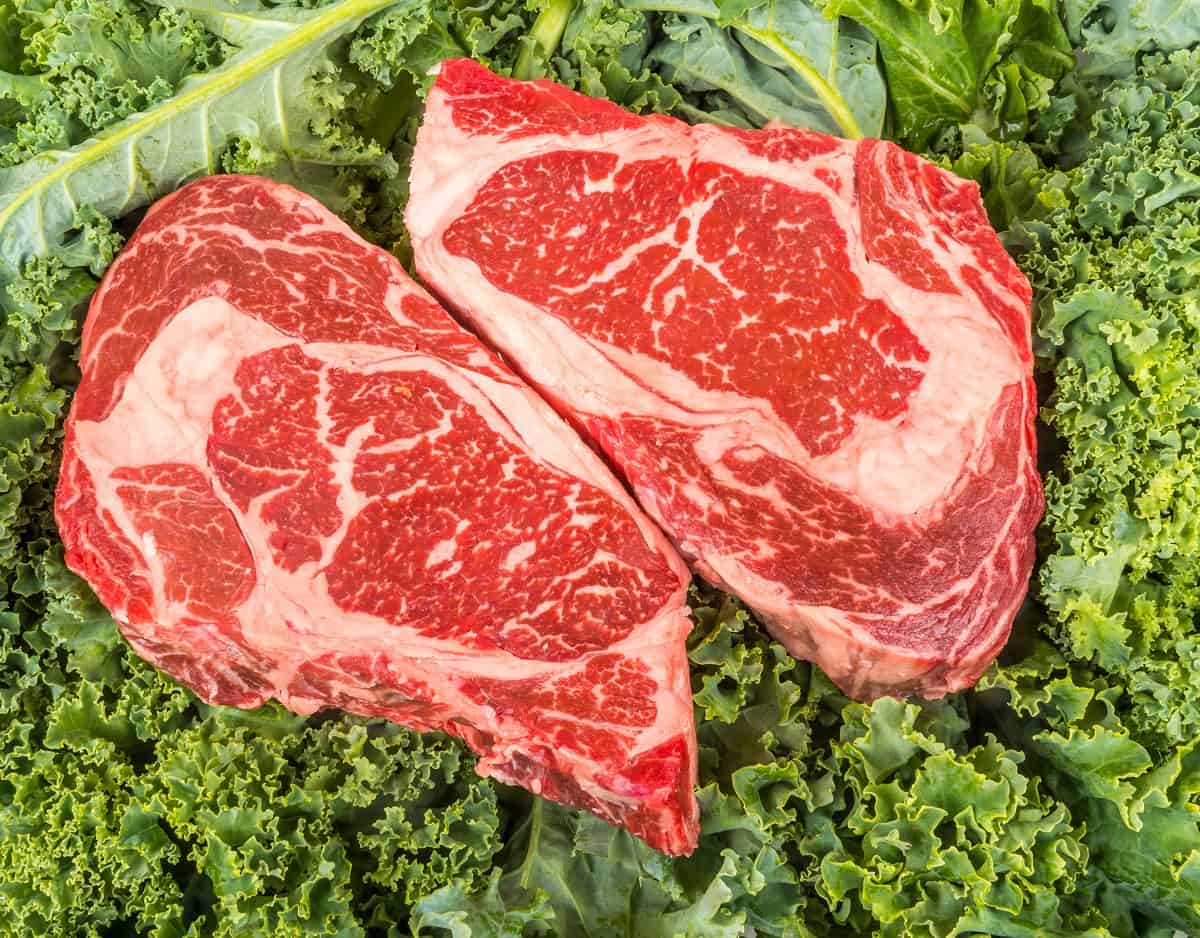Last Updated on October 16, 2024
Many of us grow up consuming more Beef than Kale because of accessibility. However, did you know that in terms of the dietary perspective, Kale and beef have been competing as to which of them has the more and better protein? If you did not know this, continue reading on this article as we compare the proteins in Kale vs. Beef.
What is Protein?
Before we compare the protein in Kale vs beef, let us first understand what protein is, how it works, and what it does to our body. Protein is a chain-like molecule that is composed of many amino acids that are glued together by peptide bonds. They can be found in the human body, bacteria, fungi, plants, and animals.
Protein is a significant part of human diets. It manifests in the forms of nuts, eggs, beef, pork, Kale, and milk, which are typical items found in the refrigerator of ordinary citizens. Aside from that, it can even be found in drinks and bars sold in restaurants and supermarkets.
Proteins have different shapes, which means that they also have different functions. It also helps in strengthening and developing bones and muscle repair. However, aside from these, proteins can function in various ways.
The importance of protein has been significantly back by science. Protein is dubbed to be life’s building blocks, which helps cells repair and develop.
The ideal consumption of protein must not exceed 0.8g per kilo of bodyweight. So, for example, if you weigh 50kg, your typical daily protein consumption must be around 40g. Taking in this suggested amount ensures that your body can function well.
Having little protein in the body can cause kwashiorkor, which may result in edema, hair loss, delayed growth, and loss of muscle mass.
Protein in Kale vs. Beef
Now that we have a clearer understanding of what is protein, let us take a more in-depth look at the protein in Kale and beef.
Kale has been dubbed as one of the world’s healthiest food. It is a green or purple leafy vegetable that is part of the cabbage family. A kale leaf’s nutritional value is comprised of 1% fat, 4% protein, 9% carbohydrates, and 84% of water.
The protein content of Kale is significant even if it is only 4% on the surface level. This is because the other major component it has is water, so this means that it is more jam-packed with good protein and carbohydrates.
The proteins from Kale are also more natural to break down by the digestive system, which makes it a lot easier for the body in general.
Kale is also a good source of vitamins such as Vitamin C, E, and K. Aside from that; it also contains minerals such as Calcium, Magnesium, Potassium, Sodium, and Zinc.

There are many different ways to cook and consume Kale. You can fry it, incorporate in salads, or include in healthy shakes. However, boiling down Kale reduces it’s health benefits.
One of the significant downsides of Kale is it is portioning. For you to get its upmost benefit, you have to intake a considerable amount of it. You can do this by incorporating Kale creatively in your drinks and meals.
Meanwhile, beef is sourced out from the carcass of cattle. The skeletal muscle of beef can come in different shapes and sizes. To name a few, the beef can be made into a hanger steak, rib-eye steak, sirloin steak or fillet mignon.
Many of us have developed a taste for beef because it is juicy, delicious, and it fulfills our primal instinct of consuming meat. Beef is 25% of the world’s meat production next to poultry and pork. Aside from that, it is also our traditional source of good protein and several other nutrients.
In a 100g serving of beef, it contains 3% Sodium, 9% Potassium, 23% fat, 30% cholesterol, and 52% Protein. The amount of protein it has is significant compare to Kale. However, the problem lies with what is accompanied by the protein, which is fat and cholesterol.
Due to the fact that beef is considered delicious, many people can overeat it, which is not within the suggested amount of protein intake. As time goes by and such practice is continued, excessive cholesterol builds up and make causes cardio issues, and fat may also cause obesity.
Aside from that, another criticism against beef as a source of protein is its productions. Many concerns have been raised concerning the issue of the effects of unethical and excessive cattle farming, which harms animals and the environment.
Which is a Better Protein Source: Kale or Beef?
As mentioned above, the healthier choice as a primary source of protein is Kale. This is because it is accompanied by more robust and easy to digest nutrients for the body. Kale is just basically protein, carbs, and water.
On the other hand, we have beef. It has a high amount of protein, but it also has significant fat and cholesterol. This becomes a problem because people love eating beef so much that they eat beyond what their bodies require.
However, it will all boil down to personal preference. Some people cannot take the taste of Kale, and that is fine. It is okay as long as their beef consumption is according to their proper proportion. If it is beyond it, it will eventually result in serious medical problems.
Final Thoughts
Protein is indeed an essential nutrient to our bodies. Having a sufficient and healthy amount of it must be a priority, which is why in choosing between Kale and beef, hopefully, the pieces of information we have laid down above have helped you make the right choice.
If you happen to have any questions, do not hesitate to ask us and comment down below. Feel free also to share your insights with regards to the question of which is better, Kale, or Beef?

Lacey is an environmental enthusiast and passionate advocate for living green and sustainable. She believes that everyone can make a difference, no matter how small. Lacey is dedicated to reducing her own carbon footprint and educating others on the importance of living greener. She is an advocate for green energy and sustainable practices. She is an active member of her local community, volunteering with local conservation efforts, and taking part in sustainability initiatives. Lacey is a firm believer that the only way to ensure a sustainable future is to work together and make small, but important changes.

